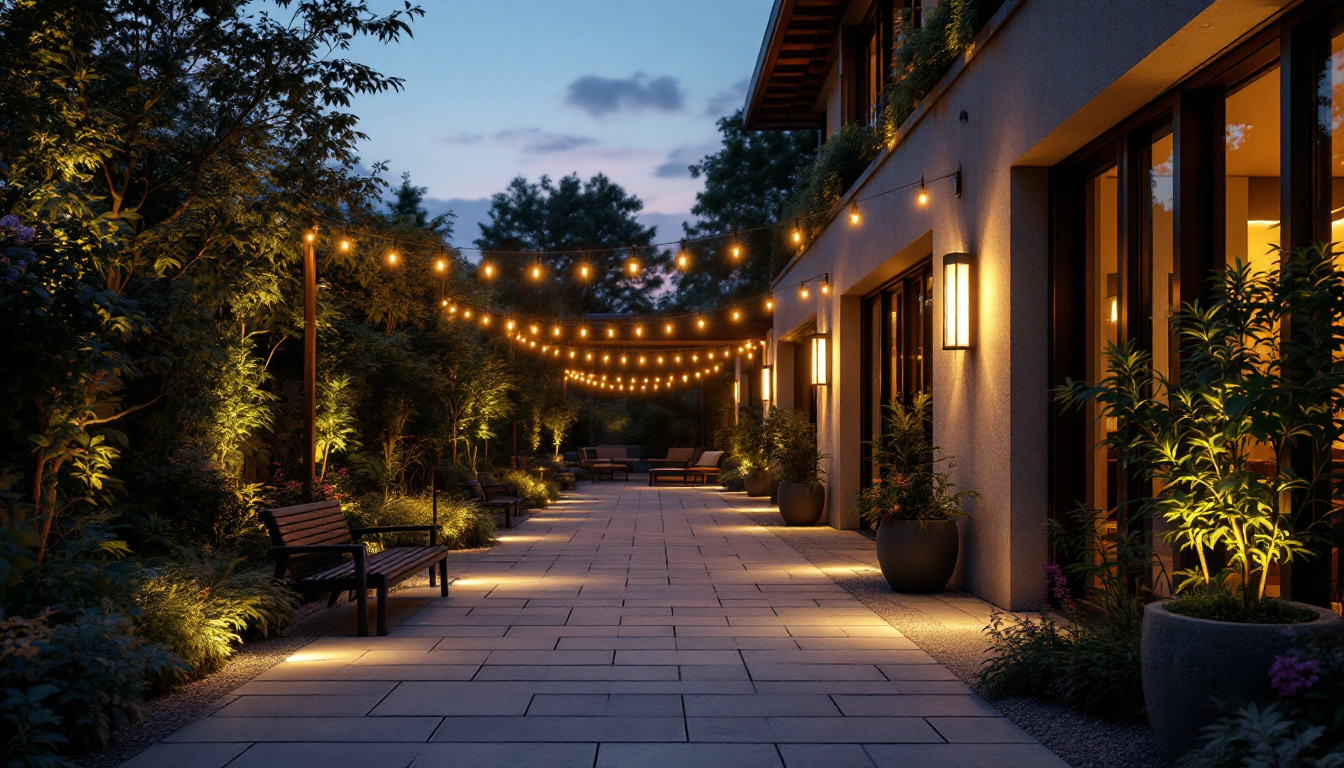
The invention of the light bulb marked a pivotal moment in the history of technology and innovation. This seemingly simple device revolutionized the way humans interact with their environment, extending productive hours and enhancing quality of life. For lighting contractors, understanding the evolution and significance of the light bulb is essential, as it informs current practices and future innovations in the industry.
Before the advent of the light bulb, humans relied on various forms of artificial light that were often inefficient and hazardous. From oil lamps to gas lights, these early sources of illumination had their limitations, including safety risks and high operational costs. The quest for a safer, more efficient lighting solution was paramount.
Traditional lighting methods, such as candles and gas lamps, posed significant challenges. They were not only inefficient but also created fire hazards and emitted harmful fumes. As urban areas expanded, the need for a reliable and safe lighting solution became increasingly urgent. The flickering flames of candles could easily ignite nearby materials, leading to devastating fires in densely populated neighborhoods. Furthermore, the soot and smoke produced by burning oil or gas not only darkened walls and ceilings but also contributed to respiratory issues among inhabitants. The limitations of these early lighting methods highlighted the necessity for innovation in illumination technology, prompting inventors and scientists to explore new possibilities.
The transition to electric lighting began to take shape as advancements in electrical engineering emerged. The potential for electric light promised a cleaner, safer, and more controllable form of illumination. However, the technology was still in its infancy, and practical applications were limited. Early experiments with arc lamps and incandescent bulbs laid the groundwork for future developments, but the high cost of electricity and the lack of widespread electrical infrastructure hindered rapid adoption. Despite these challenges, the allure of electric lighting was undeniable; it offered not only brighter illumination but also the possibility of extending productive hours into the night. As cities began to electrify, public spaces transformed dramatically, with streets and parks illuminated for the first time, fostering a new sense of safety and community engagement after dark. The stage was set for a revolution in how people lived and interacted with their environments, paving the way for the modern era of lighting that we enjoy today.
The invention of the incandescent light bulb is often credited to several inventors who contributed to its development. This breakthrough created a new paradigm in lighting, making it accessible for widespread use. The incandescent bulb utilized a filament that glowed when an electric current passed through it, producing light efficiently.
One of the most significant advancements in the creation of the incandescent bulb was the development of the filament. Early versions used carbonized materials, but as technology progressed, tungsten became the preferred choice due to its higher melting point and durability. This innovation allowed bulbs to last longer and operate at higher temperatures, increasing their efficiency. The introduction of coiled filaments further enhanced the light bulb’s performance, as this design maximized the surface area of the filament, allowing it to produce more light while consuming less energy. This evolution in filament technology paved the way for the modern incandescent bulb, which became a staple in households and businesses alike.
The introduction of the incandescent light bulb transformed daily life. Homes, streets, and workplaces became illuminated, extending productive hours and enhancing safety. This shift not only improved living conditions but also spurred economic growth by enabling activities that were previously impossible after dark. The newfound ability to light up spaces led to the rise of nightlife, with theaters, restaurants, and social gatherings flourishing in the glow of electric light. Moreover, the incandescent bulb played a crucial role in the industrial revolution, allowing factories to operate around the clock, thereby increasing productivity and efficiency. As cities began to adopt street lighting, public safety improved significantly, reducing crime rates and fostering a sense of community. The light bulb did not just illuminate the night; it illuminated the path to modern civilization as we know it today.
As the incandescent bulb gained popularity, the lighting industry began to explore alternative technologies. The quest for greater energy efficiency and sustainability led to the development of various lighting solutions, including fluorescent and LED bulbs. Each of these technologies brought unique benefits and challenges.
Fluorescent lighting emerged as a more energy-efficient alternative to incandescent bulbs. Utilizing a gas-filled tube, fluorescent lights produce illumination through a chemical reaction. This technology allowed for longer-lasting bulbs and significant energy savings, making it a popular choice for commercial applications. However, the use of mercury in fluorescent bulbs raised environmental concerns, prompting further innovation in the lighting sector. Additionally, the flickering effect and color rendering of fluorescent lights were often criticized, leading to the development of improved versions that addressed these issues, making them more appealing to both businesses and consumers.
Light Emitting Diodes (LEDs) represent the latest advancement in lighting technology. LEDs are highly efficient, durable, and versatile, making them suitable for a wide range of applications. Their ability to produce bright light while consuming minimal energy has made them the go-to choice for modern lighting solutions. Furthermore, LEDs offer an impressive lifespan, often lasting up to 25,000 hours or more, which significantly reduces the frequency of replacements and waste. The adaptability of LED technology has also led to innovations such as smart lighting systems, which can be controlled remotely and programmed for various settings, enhancing both convenience and energy management in homes and businesses alike. As the demand for sustainable practices continues to grow, the role of LED technology in reducing carbon footprints and promoting energy conservation becomes increasingly vital.
The light bulb’s creation was not just about illumination; it fundamentally changed how society operates. It paved the way for technological advancements, urban development, and a shift in cultural norms. The implications of this invention continue to resonate in today’s lighting industry.
The widespread adoption of electric lighting transformed urban landscapes. Cities became vibrant hubs of activity, with illuminated streets and public spaces. This transformation not only enhanced safety but also encouraged social interactions and economic activities during nighttime hours. The introduction of streetlights allowed businesses to extend their hours, leading to a bustling nightlife that fostered community engagement and cultural events. Cafés, theaters, and shops began to thrive after dark, creating a new rhythm of life in urban areas that had previously been limited by the setting sun.
The availability of reliable lighting influenced architectural design and interior spaces. Designers began to incorporate lighting as a critical element in their projects, enhancing aesthetics and functionality. This shift led to the creation of spaces that are not only visually appealing but also conducive to various activities. Architects started to experiment with different types of fixtures and placements, using light to highlight architectural features and create mood. The interplay of light and shadow became a vital aspect of design philosophy, leading to innovative uses of glass, open spaces, and even outdoor areas that could be enjoyed at night. Moreover, the evolution of lighting technology, from incandescent bulbs to LED solutions, has allowed for greater energy efficiency and creative possibilities, further pushing the boundaries of what can be achieved in modern architecture.
Despite the advancements in lighting technology, the industry faces ongoing challenges. Energy efficiency, sustainability, and evolving consumer preferences are at the forefront of current discussions. Lighting contractors must navigate these challenges to remain competitive and meet the demands of their clients.
As concerns about climate change and energy consumption grow, regulations surrounding energy efficiency are becoming more stringent. Lighting contractors must stay informed about these regulations to ensure compliance and provide clients with the most efficient solutions available.
Today’s consumers are increasingly conscious of their environmental impact. As a result, there is a growing demand for sustainable lighting solutions. Contractors who can offer energy-efficient products and practices will be well-positioned to meet this demand and attract eco-conscious clients.
Looking ahead, the lighting industry is poised for continued innovation. Emerging technologies and trends are shaping the future of lighting, offering exciting opportunities for contractors to explore.
Smart lighting technology is revolutionizing how lighting systems are controlled and managed. With the integration of IoT (Internet of Things) devices, smart lighting allows for remote control, automation, and energy monitoring. This technology not only enhances convenience but also contributes to energy savings, making it an attractive option for both residential and commercial applications.
Human-centric lighting focuses on the impact of light on human health and well-being. This approach considers factors such as color temperature and intensity, aiming to create environments that promote comfort and productivity. As awareness of the importance of lighting on mental and physical health grows, contractors can leverage this trend to provide tailored solutions for clients.
The creation of the light bulb was a transformative event that reshaped the world. Its impact on the lighting industry is profound, influencing everything from urban design to technological advancements. As the industry continues to evolve, lighting contractors play a crucial role in navigating challenges and embracing innovations.
Understanding the history and significance of the light bulb is essential for contractors aiming to stay competitive in a rapidly changing market. By embracing new technologies and sustainable practices, they can ensure that the legacy of the light bulb continues to shine brightly for generations to come.
As you embrace the innovations and legacy of the light bulb in your lighting projects, choose LumenWholesale for your needs. We provide contractors with exceptional, spec-grade lighting products at prices that can’t be beaten. Our commitment to quality, affordability, and convenience is unmatched, ensuring you have access to the best lighting solutions for any project. Say goodbye to inflated markups and hello to hassle-free bulk buying with free shipping. Elevate your lighting game with Wholesale Lighting at the Best Value from LumenWholesale, where excellence meets efficiency.

Explore the rising significance of dusk to dawn outside lights in the lighting industry.

Discover essential tips for lighting contractors to maximize the efficiency of LED solar power dusk-to-dawn spotlights.

Discover how large commercial fans can enhance the efficiency and success of lighting contractors.

Explore the diverse world of lighting fixtures with our comprehensive guide tailored for lighting contractors.